Trademark for Wine vs. Vodka: Court Issues Preliminary Injunction
On March 9, 2015, the U.S. District Court for the Central District of California issued a preliminary injunction to White Oak Vineyards & Winery, LLC against White Oak Spirits LLC enjoining the spirits producer from use of the term WHITE OAK on vodka based on likelihood of consumer confusion with the mark WHITE OAK for wine. A copy of the decision may be found here.
While we have frequently written about the trend at the USPTO to find wine and spirits to be related goods for purposes of finding likelihood of confusion, we have not seen the same prevalence of findings in federal court decisions related to infringement. Thus, this decision is notable in such regard.
The marks in this case were virtually identical: WHITE OAK for wine vs. WHITE OAK PREMIUM VODKA for vodka. While defendant argued that the use of the words “premium vodka” with WHITE OAK would distinguish its brand from that of Plaintiff, the court found that consumers would focus on the distinctive portion – WHITE OAK – and give little consideration to the generic terms. Defendant also failed to convince the court that the distinctive labels of the products (see below) would allow consumers to distinguish between the goods, mainly because the court found that the products may also be ordered from wine lists in restaurants and bars or through other avenues where the labels would not be visible.
As far as the relatedness of the goods, the court noted that consumers would not believe one product to be the other, but rather that consumers may believe that the two products came from the same source or producer. The court cited to evidence submitted by plaintiff of the Napa producer of DOMAINE CHARBAY which produces both wine and spirits under the same mark. We have also noted in this blog that there is a current trend of the same brands appearing on wines and spirits which reflects a changing landscape on the issue of relatedness under trademark law. Below are a few more examples:
What is notable about the court’s opinion is that it expressly stated that it was not establishing a per se rule as to the relatedness of wine and spirits and specifically noted that on the totality of the facts – “namely, that the names of the two products are identical – the goods are sufficiently related for a likelihood of confusion to arise.” So does this mean that spirits and wine will be found to be related when the marks are not identical? Maybe. It will depend on the marks and the degree of similarity. However, what is clear is that going forward wineries and distilleries should not rely on any perceived marketplace differences between their goods to adopt marks that are identical to marks on goods in the other sector.
Two other takeaways from this opinion: 1) the distillery first approached the winery for a consent to register its mark after its trademark application was refused by the USPTO and winery’s response was a demand to stop use; a lesson as to potential implications in approaching other parties for consent agreements; and, 2) for all of you trademark geeks, the court issued a preliminary injunction despite the recent Ninth Circuit decision in Herb Reed Enterprises requiring that irreparable harm be grounded in evidence and not be speculative; while the court noted that harm could not be presumed, the court found that plaintiff’s loss of control over its mark would cause irreparable harm, which is essentially what the presumption once was ….
Tacking your New Trademark onto the Old? Supremes: Ask a Jury
Resolving a circuit split, the Supreme Court in Hana Financial, Inc. v. Hana Bank, et al., 574 U. S. ____ (2015) on Wednesday unanimously affirmed a Ninth Circuit decision that the issue of “tacking” – where a trademark user modifies its mark over time while managing to retain its longstanding use and priority position over others (i.e., “tacking” a newer mark onto an older version) – is usually an issue appropriately tried to a jury.
In so holding, the Court validated a District Court jury decision that Respondent Hana Bank did not infringe Petitioner Hana Financial’s trademark (although Hana Financial appeared to have priority in the U.S. going back to 1995) in part because Hana Bank operated under a series of “Hana” names (including advertising as “Hana Overseas Korean Club”) going back to 1994 in the U.S., and had operated under the name Hana Bank in Korea going back to 1991.
The case has some interesting implications. The question of whether two similar trademarks owned by the same party can be tacked together to provide earlier priority has historically come down to whether the marks are “legal equivalents” conveying the same, continuous commercial impression in the community and in particular, the eyes of the ordinary consumer.
Citing to an 1874 case for the proposition that “twelve men know more of the common affairs of life than does one man,” the Court determined that consumers, not judges, are in the best position to make this determination.
In the opinion rendered by Justice Sotomayor (slip opinion available at: https://home.comcast.net/~jlw28129/HANA.pdf), concerns such as potential lack of uniformity of trademark jury decisions and the resulting inconsistency of the evolving trademark case law around the tacking issue were eschewed in favor of upholding the perspective of the ordinary purchaser, through which the tacking doctrine is said to operate. However, the Court did reserve the tacking determination for judges in bench trials (where no jury is empaneled), and on motions for summary judgment and judgment as a matter of law.
The Court indicated that jury instructions will help guide the jury and ensure application of the correct legal standard.
Sometimes the wording of a jury instruction raises more questions than answers for the jury who must decipher the lingo. The jury instruction for “tacking” in this case was: “A party may claim priority in a mark based on the first use date of a similar but technically distinct mark where the previously used mark is the legal equivalent of the mark in question or indistinguishable therefrom such that consumers consider both as the same mark. This is called ‘tacking.’ The marks must create the same, continuing commercial impression, and the later mark should not materially differ from or alter the character of the mark attempted to be tacked.”
What does the decision mean for brand owners? The clear takeaway is that nothing is certain as it relates to the doctrine of tacking, and whether a given jury will agree to find that the newer iteration of a trademark is tied to an older manifestation of the same mark. In cases where a jury has been demanded, it will be much more difficult to quickly dispose of a case involving the tacking issue on a motion prior to trial. This creates a landscape of increased unpredictability and expense in prosecuting or defending such cases, giving rise to a host of strategic considerations on the branding side, as well as, in pre-litigation.
Launching New Wine Brand Without a Winery
Beverage Trade Network recently published an article “Launching New Wine Brand Without a Winery” by DP&F attorneys John Trinidad and Katja Loeffelholz on insights on how to navigate legal hurdles when entering the wine industry. The article explores some of the key legal and regulatory issues facing “virtual wineries,” including securing the right licenses and permits, and protecting intellectual property. You can access the article using the following link.
USPTO Recognizes Exclusivity in Surname Trademark for Wine
On November 7, 2014, the Trademark Trial and Appeal Board of the U.S. Patent and Trademark Office issued an opinion upholding the refusal to register the trademark BARTON FAMILY WINERY for wine based on a prior trademark registration for THOMAS BARTON, also for wine. A copy of the opinion may be found here. While this is a non-precedential case, it does reflect fairly well-settled law concerning surnames and similarity between marks and is worth reviewing for members of an industry where surname trademarks are prevalent. Essentially, the Board found that “BARTON” was the dominant portion of the mark BARTON FAMILY WINES as “BARTON” is the first term in the mark and the terms “FAMILY WINERY” are merely descriptive of applicant’s business operations. In comparing this to THOMAS BARTON, the Board held that consumers would view BARTON FAMILY WINES as a line extension from THOMAS BARTON of wines only bearing the BARTON surname. Thus, the Board held the marks to be similar and given the identical nature of the goods found there to be a likelihood of consumer confusion.
What is perhaps more interesting about this case is that there are apparently six other third-party registrations for “BARTON” marks for alcohol beverages. This usually suggests that a term is weak and not entitled to much protection. However, the Board discounted these registrations on the basis that there was no evidence of whether these other marks were even used as four of the registrations were not based on use of the mark in commerce and for the two registrations that were based on use, there was no proof of use entered in the record. It is also notable that the two “BARTON” registrations that were based on use were for trademarks for whiskey. While the Board did not expressly state that the marks for whiskey were discounted because the marks in dispute were for wine, this seems to have impacted the Board’s view on the matter. Hindsight is always 20/20, but if the applicant had perhaps put in evidence of third-party use of the term “BARTON” on wine, there may have been a different result as there may have been a different conclusion by the Board as to the strength of the term “BARTON” in the likelihood of confusion analysis. A search of the COLA database using the ShipCompliant Label Vision program discloses several “BARTON” marks for wine including BARTON & GUESTIER, CHATEAU LEOVILLE BARTON, CHATEAU LANGOA BARTON, CHATEAU MAUVESIN BARTON and LA CROIX BARTON.
However, even with this additional evidence, the applicant still may not have prevailed given the fact that its mark is essentially BARTON and the only other points of distinction are descriptive terms. Had applicant’s mark been JAMES BARTON or JONES & BARTON, it may never have even been initially refused by the trademark examiner, and this is perhaps the best take away from this case. If you are the first to register a surname by itself, e.g., SBRAGIA, the USPTO will likely refuse registration to second-comers that include that surname as part of their mark. If you are a second-comer and a surname is already registered as part of composite trademark, e.g., THOMAS BARTON, you will be unlikely to obtain registration of the surname by itself or in combination with other descriptive terms and your better course of action would be to adopt a distinctive composite if you want to register the surname, e.g., JAMES BARTON. These are important considerations when deciding what mark to adopt.
Another interesting side note: the Board repeatedly referred to the “distillation” of wine at a winery facility. Honest mistake given the range of industries with which the USPTO interacts, but entertaining nonetheless.
DP&F Sr. Counsel Chris Passarelli’s Article on the <.Wine> TLD featured in the September Issue of Practical Winery & Vineyard Magazine
We are proud to announce Chris Passarelli’s feature article in the September 2014 issue of Wines &Vines/Practical Winery & Vineyard Magazine, regarding the ongoing controversy centered around the emerging .Wine TLD and its impact on the wine industry and consumers. A link to the article (on page 58-59) is available here.
Chris Passarelli and Scott Gerien recently presented a continuing legal education (CLE) seminar on gTLD and brand enforcement for the 8,000+ members of the Business Law Section of the State Bar of California, which is available for download on the State Bar’s website here.
The Legal Complexities of Unauthorized Dealers, Grey Market and Parallel Importation
Chris Passarelli recently presented a continuing legal education (CLE) program at the State Bar of California 87th Annual Meeting in San Diego on behalf of the Business Law Section. Attached are the written materials for that program.
Contact Chris Passarelli for any inquiries related to strategic enforcement in the online auction, distribution and supply chain integrity, grey market, parallel importation and counterfeiting context.
Trademark Protection for Vineyard Brands
The June 2014 issue of Practical Winery & Vineyard features an article by DP&F’s Katja Loeffelholz titled “Branding Agricultural Commodities.” The articles provides growers with a detailed summary of the importance of protecting their vineyard’s brand.
You can access the article by clicking on the image below.
For more information on how you can secure trademark rights, please contact Katja Loeffelholz at [email protected].
Why Would Wine Industry Support .wine TLD?
On Saturday, June 21, 2014, the 50th session of ICANN meetings opened up in London. ICANN, the Internet Corporation for Assigned Names and Numbers, is the non-profit organization that coordinates the Internet’s global domain system. One of the issues addressed at the London meetings was the ongoing issue of the new Top Level Domains (TLDs) for .wine and .vin and issues being pressed by wine regions and various governments as to the lack of protection afforded to appellations or “geographical indications” (GIs) under the new system for establishing TLDs.
As a bit of background, several years ago ICANN thought it would be a good idea to have new TLDs other than “.com” to better organize the Internet around different subject areas. In order to do this, ICANN established a system to sell control of these new TLDs to registrars who would then control the use of the respective TLD. However, as any trademark owner can tell you, the Internet and second-level domains under a TLD (e.g., apple.com is a second level domain under .com) create a sewer for trademark misappropriation and can cost trademark owners tens or hundreds of thousands of dollars a year in enforcement costs. Accordingly, the idea of new TLDs was not strongly supported by many trademark owners as most found the “.com” TLD to work just fine and many viewed new TLDs as simply additional venues in which they needed to defend their trademarks from misuse as second-level domains.
In order to address the concerns of trademark owners, ICANN devised the Trademark Clearinghouse (“TMCH”). Under the provisions of the TMCH, owners of registered trademarks apply to have their trademark registered so that when a new TLD is recognized the trademark owner has the opportunity to “buy” their own trademark as a second level domain under the TLD before the general public can do so. In addition to the cost of buying one’s own trademark as a second level domain name, there are also fees for the privilege of being registered with the TMCH so that you can buy your own trademark before someone else can.
So now we turn to the issue and controversy of GIs and .wine and .vin. Under the provisions of the international General Agreement on Tariffs and Trade (“GATT”) Agreement on Trade-Related Aspects of Intellectual Property Rights (“TRIPS”) GIs are recognized as intellectual property rights on the same level with trademarks. Examples of US GIs for wine include Napa Valley, Santa Barbara and Long Island. Despite the fact that GIs are recognized as intellectual property on par with trademarks, ICANN failed to account for any protections for GIs in its scheme for new TLDs. Accordingly, many wine region associations from around the world, including Napa Valley Vintners, Santa Barbara Vintners and the Long Island Wine Council, as well as many governments which strongly back their regional wine associations, have objected to the recognition of the TLDs .wine and .vin without providing GIs with the same safeguards provided to trademarks.
Notably, the National Telecommunications & Information Administration (“NTIA”), an agency of the U.S. Department of Commerce which represents the U.S. Government before ICANN and at the meetings taking place in London, is not in support of providing any additional protections to GIs to put them on par with trademarks in being protected from domain name poachers under the .wine and .vin TLDs. At the London meetings, various European governments pushing for GI protections under the .wine and .vin TLDs noted that the issue is an international one and that wine regions from around the world stood to benefit from such protections, and also noted that U.S. wine regions also supported this position. It is reported that in response to this, the representative from NTIA stated that these are only three of thousands of U.S. “wineries.”
Sadly, this lack of knowledge and understanding of the U.S. wine industry demonstrated by the U.S. government representative at an international meeting demonstrates how little consideration the U.S. government has for the wine industry on this topic. Napa Valley Vintners has 500 winery members, Santa Barbara Vintners has 129 winery and vineyard members and the Long Island Wine Council has 48 winery members. Thus, these associations represent the interests of over 675 wineries and vineyards. However, the U.S. Government apparently considers this unimportant.
However, even more importantly, and as I question in my subject line: why would the wine industry support the .wine TLD? As previously mentioned, the new TLDs are not wanted by trademark owners. In fact, many of our winery trademark clients have either indicated they will begrudgingly protect only their most important trademarks from poaching under .wine and .vin, or will not take part at all, simply because there is no interest in .wine and .vin. Furthermore, while Wine Institute has somewhat waded into the fray involving the .wine TLD and GIs and has expressed its concern for protection of GIs due to the use of semi-generic terms (e.g., port) by Wine Institute members, it has simultaneously stated that it “takes no position on the disposition of a .wine or .vin gTLD.” Why? Presumably because there is no outcry or need for the .wine or .vin TLDs and many Wine Institute members maintain large trademark portfolios and have no interest in paying large sums of money to buy their own trademarks as second level domains under these TLDs.
So why is the U.S. Government pushing for the .wine and .vin TLDs? One can only assume that it is because it is placing the importance of the technology industry and the parties trying to become registrars for these TLDs above the importance of the wine industry and its members. Why else would the U.S. government send a representative to speak on the .wine issue with so little knowledge and understanding of the wine industry?
The take away for our readers is that if you have no need for the .wine or .vin TLD, have no interest in paying to buy your trademark under these TLDs, and don’t want to see your appellation name stolen under these TLDs, let your representatives and senators know this and perhaps it is not too late to prevent these TLDs from going into effect. Otherwise, if the TLDs move forward you will need to either protect your brand in the TMCH or hope that no one is interested in registering your brand name as a second level domain name under .vin or .wine. You will also need to hope that the second level domain for your appellation is not registered by one of your competitors, a retailer, or some other party with bad intent.
For further information or assistance on trademark protection or protection in the TMCH, contact Scott Gerien at [email protected].
Loeffelholz / Trinidad on Wine Labeling Legal and IP Issues
Wine Business Monthly recently published an article by DP&F attorneys Katja Loeffelholz and John Trinidad on wine labeling legal and intellectual property issues. You can access the article using the following link:
“Avoiding Label Approval Issues”
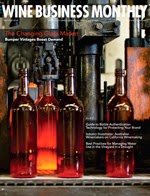 (Published with the permission of Wine Business Monthly).
(Published with the permission of Wine Business Monthly).
Trends in Wine Package Design
Practical Winery & Vineyard recently published an article written by Dickenson, Peatman & Fogarty attorney Katja Loeffelholz. Katja’s article “What’s trending, how to capture it” discusses how technological advancements have permitted an evolution in wine labels, bottle shapes, closures and packaging designs.
One wine bottle can contain several protectable elements. Word mark, logos/images, taglines/slogans, color, configurations, label design, trade dress, product features and design patents are all protectable elements of wine packaging. Protecting these different element can build brand equity.
Katja is a registered attorney with the United States Patent and Trademark Office.
To learn more about protecting all aspects of intellectual property in your wine label and packaging please contact Katja Loeffelholz at [email protected].
Branding Strategies in Agricultural Commodities: Vineyard & Block Designates
By Katja Loeffelholz, Dickenson, Peatman & Fogarty
The prominence of vineyard-designated wines is another lesson in value-added agricultural branding which presents both the winery and the vineyard owner or lessee with a number of marketing and legal issues. Recognizing the value of vineyard designated names, vineyards have long been designating blocks within their vineyards with proprietary names.
In this way, even though multiple wineries are purchasing grapes from the same vineyard property, each winery can have a distinct name to refer to the vineyard block where the grapes were grown, also known as the “block designate.” If a vineyard owner sells wine grapes to a winery under a vineyard designate or block designate, the winery may use that vineyard or block name on wine produced from those grapes to designate origin so long as such use complies with the vineyard designation labeling requirements of the Alcohol and Tobacco Tax and Trade Bureau (TTB). Accordingly, the vineyard owner — not the winery – theoretically owns rights in the name.
Wineries may consequently find their vineyard-designated wines embroiled in a trademark dispute between different winery owners. One of the most well-publicized vineyard name trademark disputes involved the famed To Kalon Vineyard. Originally planted in 1868, To Kalon was eventually divided up and by the 1990s, both the Robert Mondavi Winery and Andy Beckstoffer owned portions of the vineyard. Mondavi secured federal trademark registrations for both the TO KALON and TO KALON VINEYARD marks. Schrader Cellars had entered into an agreement to purchase grapes from Beckstoffer, and Schrader planned to use the “Beckstoffer Original To Kalon Vineyard” designation on its wine label. In 2002, Mondavi sued Schrader Cellars, and sought an injunction to bar Schrader’s sale of “To Kalon Vineyard” designated wine. The parties eventually settled their dispute, and Beckstoffer was granted a royalty free license to continue to use the To Kalon name.
Thus, when the vineyard is owned by another party, the risk to the winery in marketing vineyard and block designated wines made from contract grapes is that once the contract ends, so can the rights to continue use of the vineyard and/or block designation. A winery must accept that by producing and marketing vineyard-designated wine made from grapes grown in a vineyard that the winery does not own, the winery is potentially spending time and money building brand equity for someone else. When the grape contract ends, there is considerable risk that the “brand” of the vineyard owner may be used by the vineyard owner itself, or potentially by other wineries that contract with the vineyard owner.
Wineries are often unaware that the vineyard designation or block designation actually belongs to the vineyard owner. Many wineries feel that if they are using the vineyard designation on wine and popularizing the vineyard name, they should own the rights in the vineyard or block designate as a trademark. While this may be a questionable legal position, this attitude among some wineries may nevertheless be problematic from a practical perspective. Should a winery successfully register rights in a mark which is used as a vineyard or block designate, the vineyard owner will need to spend considerable time and money in a potentially unsuccessful effort to regain clear rights in the name. The best way a vineyard owner can protect itself is to register its brands and properly license them to a winery.
To maintain trademark rights, an owner must control the quality of goods sold under the mark. For a vineyard owner, this can be accomplished through specific provisions in a grape contract or through a related trademark license agreement which is separate from the grape contract. A license will clearly establish that, as between the vineyard and the winery, the vineyard is the owner of the mark and that the winery (and its use of the designate) is subject to the terms of the license, as well as, the vineyard owner’s control of the quality of wine provided under the mark. In practice, such quality control can often be administered in a non-disruptive, nonintrusive manner (e.g., sufficient quality may be presumed based on maintenance of quality heretofore maintained by the winery operation).
The strategy of enhancing the value of grapes by naming the grapes from a certain vineyard is also widely used to enhance the value of other agricultural commodities, such as cattle from a certain ranch, or spinach from a particular farm. As the commodity producer, it is important to register the trademarks for the brands used with these agricultural products so that the commodities themselves (as well as the land from which they come) can accrue value, prestige and reputation which inures to the brand assets.
Are you adequately protecting your vineyard designate or agricultural commodity?
For inquiries, please contact Katja Loeffelholz, a registered attorney with the United States Patent and Trademark Office and Of Counsel to Dickenson, Peatman & Fogarty at [email protected].
Stella Rosa Trumpets Pyrrhic Trade Dress “Victory” Over Constellation
Plaintiff San Antonio Winery, Inc. (“SAW”) filed suit against Constellation Brands last August in the Central District of California, alleging trademark infringement, false designation of origin, and unfair competition due to Constellation’s promotion and sale of fizzy, low-alcohol, sweet (“FLAS”) red wine under the mark ROSATELLO.
SAW claims trademark rights in the mark STELLA ROSA and its “Stella Rosa Crown” design mark (U.S. Trademark Reg. Nos. 4,000,471 and 3,663,013, respectively) and use of the mark allegedly going back to 2004. In October 2013, subsequent to SAW’s filing, Constellation changed the design of its “Rosatello” labels, but otherwise kept the name in use.
Then in November, SAW filed a motion for preliminary injunction to prevent sales of ROSATELLO in connection with FLAS wine, which was heard by the court in late January. The court’s orders came down on March 11, 2013 – one order denying the injunction with respect to Constellation’s use of the trademark ROSATELLO on its newly modified packaging, and another order granting an injunction – but only as it relates to Constellation’s prior packaging, which is no longer in use.
THROWING THE MUD
In its moving papers, SAW claimed that Constellation copied its product line, transposed the STELLA ROSA trademark, and copied the packaging in a bad-faith scheme to “steal” its market share, resulting in actual confusion to consumers and retailers. Evidence of confusion consisted of Instagram posts, as well as statements from a wine store owner, a manager and wine purchaser personnel. SAW also cited in-store displays allegedly showing Rosatello product stocked on shelf space marked for Stella Rosa, and Stella Rosa product displayed atop a case of Rosatello.
SAW alleged that Constellation’s marketing confused retailers into believing that Stella Rosa had become one of the Constellation brands, damaging its image as a 100-year-old family-owned winery operation.
SAW provided “line-up” survey evidence which allegedly shows that 52% of respondents showed some confusion (over 50% confusion is considered “persuasive evidence”), based in part upon similarities in font, the crown logo adorning the capsule, the bottle shape and label design (including the word “Rosa” in red type with a similarly stylized “R”).
WHAT DO YOU MEAN: NO TRADEMARK INFRINGEMENT?
To obtain a preliminary injunction is usually a tall order. In this case, while the discontinued packaging was found problematic, the ROSATELLO trademark was not enough, by itself, to warrant an injunction from the court.
The court noted several key points in its denial of the trademark injunction. For example, when SAW applied to register the STELLA ROSA mark, it was refused on the basis of prior registrations for STELLA BELLA and BUONA STELLA, and SAW overcame such refusals by arguing that its mark was distinctly different from those other marks, as well as the mark STELLA, and hence unlikely to cause confusion. (Yes, what you say to the USPTO can and eventually will be used against you. –ed.)
In its motion, SAW relied on its considerable advertising expenditures (approximately $3.5 million) and commercial success (sales over $100 million in the last decade) of Stella Rosa to demonstrate how the strength of its mark increased over time, from what was originally considered a weak mark at the time of registration.
While the court found similarities with STELLA ROSA in the color scheme, label location and font of the prior ROSATELLO packaging, the new packaging was found to differ in all of those respects. Interestingly, despite survey evidence which showed that 37.6% of the respondents mentioned something about the name being similar, the court found that this did not support the position that the names STELLA ROSA and ROSATELLO are similar to one another, or that use of the names alone will independently confuse consumers, since the names did not appear in isolation from the packaging in SAW’s survey. (This is an important lesson in survey methodology.) The court noted that, while they bear some auditory resemblance to one another, the two marks begin and end with different sounds, and do not share any meaning – and that SAW provided no evidence that the current versions of the respective products are similar enough to confuse consumers.
The survey evidence and accounts from both retailers and consumers were found by the court to be unsupportive of the likelihood of confusion, since Constellation had already discontinued use of its prior ROSATELLO label.
SPIN CITY: WHAT’S REALLY GOING ON HERE?
Some wine writers — and even SAW’s own legal counsel in the matter — would have you believe that this represents a key victory for SAW over the “global giant” Constellation, but in reality this is hardly the case. The press release by SAW’s counsel states: “[T]he court entered an order on March 11th preliminarily enjoining Constellation’s use of the complained-of labels,” (emphasis added) but only the prior label was enjoined. In reality, the injunction is strictly limited to the older ROSATELLO product label, and only in connection with FLAS wine – Constellation’s use of ROSATELLO in connection with sparkling wines and other offerings has not been challenged by SAW’s suit.
In fact, Constellation’s ROSATELLO has not perceptibly skipped a beat, as sales continue under a slightly modified label and trade dress. Perhaps more importantly, this ruling by the court is potentially somewhat of a setback in SAW’s overall enforcement of the trademark STELLA ROSA, for which the injunction was clearly denied — creating an uphill battle for SAW on the trademark infringement claim, and effectively establishing the rather narrow scope of legal protection likely to be afforded to the STELLA ROSA mark going forward.
Below is a side-by-side comparison of the STELLA ROSA alongside both the old and new ROSATELLO bottles. Are consumers really likely to be confused?
For trademark protection and enforcement inquiries, please contact Chris Passarelli, Senior Intellectual Property Counsel at Dickenson, Peatman & Fogarty, at: [email protected].
Parker, Bloggers, and Fair Use
By John Trinidad
Lawyers for The Wine Advocate, the publication made famous by Robert Parker, recently fired off a letter to wine writer Tyler Coleman, demanding that he “immediately remove content on [his blog] www.drvino.com that was copied from eRobertParker.com,” claiming that Coleman’s use of this material “blatantly infringes upon [The Wine Advocate’s] copyright protected content.” Under federal copyright law, Coleman’s use of that material may be protected by the “fair use” doctrine.
The recent kerfuffle between Parker and Coleman arose from a post on Parker’s website criticizing a tasting led by New York Times wine writer Eric Asimov and the San Francisco Chronicle’s Jon Bonné. In follow-up comments also posted to eRobertParker.com, Wine Advocate’s editor, Lisa Perrotti-Brown, added her critique of the tasting and the wines presented. Only paid subscribers can access the article and comment section. Coleman subsequently wrote a blog post quoting from the article and Perrotti-Brown’s comments, defending Asimov and Bonné panel topic, and criticizing the tone of the Wine Advocate post.
Even assuming that Parker’s content on his website is his copyright protected property, Coleman’s use of excerpts from the eRobertParker.com site may not constitute infringement. The federal Copyright Act protects against unauthorized copying of a copyright-protected work, but does not grant the copyright owner exclusive use of that work. Use of another person’s copyright protected work “for purposes such as criticism, comment, news reporting, teaching …, scholarship, or research, is not an infringement of copyright.” This is often referred to as the “fair use doctrine.” Courts weigh four factors in considering whether an alleged infringing act qualifies as fair use:
1. The purpose and character of the alleged infringing use;
2. The nature of the copyrighted work;
3. The amount of the work used in relation to the overall work; and
4. The effect of the alleged infringing use on the market or value of the copyrighted work.
Congress and federal courts have recognized that “[c]riticism is an important and proper exercise of fair use.” If a copyright holder were allowed to raise infringement claims against any writer that quoted and then criticized its work, copyright law would have a corrosive and chilling effect on free expression. In other words, copyright protection “must yield to the right of persons to engage in full and free public discourse of ideas and issues protect by the First Amendment.” Maxtone-Graham v. Burtchaell, 631 F.Supp. 1432, 1435 (SDNY 1986). Thus, works that criticize or comment deserve protection against copyright infringement claims.
Without walking through all four fair use factors, it appears that Coleman’s use of excerpts from eRobertParker.com for comment and criticism falls squarely within the types of work that Congress intended to protect under the fair use doctrine.
John Trinidad ([email protected]).
Never the Dark Horse, Gallo Goes on Trademark Attack
On February 25, 2014, E. & J. Gallo filed a trademark suit in the Southern District of New York against Dark Horse Distillery, LLC. of Lenexa, Kansas, and T. Edward wines, Ltd., its New York distributor, claiming infringement by false designation of origin, unfair competition and trademark dilution of its registered mark DARK HORSE for which Gallo claims first use (through its predecessor in interest) in connection with wine as of 2004, as well as sales of spirits (specifically, vodka) under the same mark since 2011 (E. & J. Gallo Winery v. Dark Horse Distillery, LLC. And T. Edwards Wines, Ltd., Case No. 14-CV-1231).
The Complaint (available here) alleges that when Gallo learned of the defendant distillery’s plans to introduce its whiskey under the name DARK HORSE in 2011, it repeatedly warned the distillery that its conduct would confuse consumers, and alleges that Dark Horse Distillery has since actually admitted that consumers are actually confused by its sale of DARK HORSE Distillery Reunion Rye Whiskey and its Reserve Bourbon Whiskey under the DARK HORSE brand. If proven true, this alleged “actual confusion” could be the best evidence in favor of Gallo in the analysis of the likelihood of confusion to determine whether there is infringement of Gallo’s marks.
The Complaint also alleges that, upon learning of Gallo’s asserted rights to the mark DARK HORSE, the defendant “in defiance of Gallo’s senior rights” filed no less than six (6) trademark applications for registration of marks containing the words DARK HORSE in connection with distilled spirits, including bourbon and rye whiskey.
Wine and distilled spirits have been found to be “related goods” for purposes of analyzing the likelihood of confusion in other cases. However, any distinction here would not seem to matter all that much because Gallo allegedly sells both wine and spirits under the mark DARK HORSE. The Complaint also alleges that the defendant distillery in fact sells its spirits through a wine distributor and “encourage[es] consumers to mix its spirits with wine” (Do folks really mix the two? I am fascinated and need to meet these people. –ed.)
Gallo’s counsel also appears to employ some level of comedic license, as the Complaint defines the relevant consumers as “purchasers of value-priced alcoholic beverages” who “cannot easily distinguish between the two DARK HORSE brands that appear to be the same” and that the defendant distillery “appears eager to take advantage of them.” Kidding aside, there may be some risk that, if found liable, defendants will be found to have infringed willfully – subsequent to and in disregard of actual notice by Gallo of its registered rights. In exceptional cases, treble damages and sometimes a prevailing party’s attorneys’ fees can be awarded in instances of willful infringement.
At the moment, the field conditions seem to favor Gallo, who appears as front-runner, favored to win. However, we will just have to wait and see if defendants can stay true to the moniker and somehow pull out an unexpected victory.
Exporting Wine to China Seminar – Part II
New Chinese Trademark Law – Effective May 1, 2014
For decades, China has been criticized for shielding “trademark hijackers” – individuals or entities who have registered well known U.S. marks in China despite having no affiliation with that brand. If a winery failed to apply for their trademark in China often it was not too long thereafter that the brand would be registered in China without knowledge or permission from the brand owner. While this practice continues to this day, the new Chinese Trademark Law (adopted on August 30, 2013 and entering into effect on May 1, 2014) will emphasize the principal of good faith to aid in the crack down against trademark hijacking and will impact trademark matters in China occurring from May 1, 2014 forward.
The new law states that trademarks shall be registered and used in accordance with the principal of good faith. An injured party can use the good faith principle to challenge a trademark hijacker’s Chinese trademark registration during an opposition or invalidation proceeding even if the injured party does not hold an identical or similar trademark registered in China covering identical or related goods or services. The new law also increases the penalty cap for trademark infringements to RMB 3 million (around $491,892 U.S. Dollars). Despite these amendments, it may likely remain difficult and frequently impracticable for western entities to quash bad-faith filings of their trademarks if their brands are not registered in China.
The new law provides for specific measures to discourage bad-faith filings under certain circumstances. On the one hand, distributors and manufacturers are advised to refrain from applying for a trademark identical or similar to a trademark which has been used earlier (but not yet registered) by their partners, with respect to identical goods or services. “Partnership” is interpreted in a broad way to include contractual relationships, business relationships and other relationships.
As an added boon, the amendments prohibit a trademark agent in China to handle a trademark application if it knows or should know that the client’s application is an attempt to usurp or hijack another person’s trademark or is made with intent to preemptively register, in an unfair manner, a trademark that is already in use (but not registered) by another person who enjoys a certain reputation. Moreover, trademark agencies are prohibited from registering trademarks in their own names for other services outside IP services.
Even with the new law, the best defense is a good offense–register your brands in China. Like the United States, China is a contracting member to the Madrid Protocol. Under the Madrid Protocol, U.S. trademark counsel can apply for a trademark in China based on a client’s U.S. trademark application or registration. Utilizing the Madrid Protocol may remain the most effective strategy for protecting your brands in China.
Considering that the world has more than 7 billion inhabitants of which the majority or 1,317,471,458 billion of them reside in China, (in comparison, the U.S. population is estimated to contain 317,471,460 inhabitants[1]), with such a large potential market, it makes sense to register your brand in China. Doing so is cost effective especially in light of the frequent hijacking of wine brands. If you are planning to sell in China in the near future or would be upset to learn that your brand has already been registered in China, albeit to someone else, the most cost effective strategy to prevent such abuse is to register your brand in China. The initial outlay in registering a brand in China pales in comparison the costs associated with losing your brand to a hijacker or marshaling resources to get the brand back.
Part I of the “Exporting Wine to China Seminar” was published on LexVini on October 17, 2013.
Comparing Apples and Grapes; Not the Same for Trademarks
In most all cases that come before the United States Patent and Trademark Office Trademark Trial and Appeal Board (Board) involving relatedness of wine and other beverages, both alcoholic and non-alcoholic alike, the Board almost always finds the goods to be related for purposes of its likelihood of confusion analysis. A likelihood of confusion analysis involves analysis of several factors, any one of which can be determinative to the outcome of the case. Usually a finding that the marks are similar goes a long way in demonstrating a likelihood of confusion.
Domaine Pinnacle, Inc. (“Domaine” or “Applicant”) is a family-owned orchard and cidery located in Quebec, Canada. Domaine applied to register the mark DOMAINE PINNACLE & Design for “apple juices” and “apple based non-alcoholic beverages.” The word “domaine” was disclaimed.

Franciscan Vineyards, Inc. (“Franciscan” or “Opposer”) a wholly-owned subsidiary of Constellation Brands Inc., an international wine company and U.S. beer importer, opposed the registration of Domaine’s mark on the grounds of priority of use and likelihood of confusion with its marks PINNACLES and PINNACLE RANCHES covering wines.

In the first step of the analysis, the Board considered the similarity or dissimilarity of the marks in their entireties as to appearance, sound, connotation and commercial impression. While acknowledging the difference in wording and the presence of a design element in Domaine’s mark, the Board found the term PINNACLE to be the dominant element in the mark and found the parties’ marks are “similar in appearance, sound, connotation and commercial impression.” Thus, the similarity of the marks weighed in favor of the Board finding a likelihood of confusion.
However, when considering the relatedness of the goods, the Board stated that “we cannot per se deem wines and non-alcoholic apple juices or beverages as related goods; rather, we must examine the particular factual circumstances of each case.”
Franciscan, as plaintiff in the proceeding, bore the burden of establishing a likelihood of confusion by a preponderance of the evidence. Here, Domaine did not even submit evidence nor file a brief with the Board. Nevertheless, the Board found that Franciscan failed to introduce evidence that the same entities produce and sell both wine and “[a]pple juices” or “apple-based non-alcoholic beverages,” or that they market the productsunder the same mark in the United States. Further, Franciscan failed to present evidence showing that the products are complementary (e.g., consumed together at the same meal), or that the goods are sold in proximity to each other in retail outlets.
The lack of evidence regarding relatedness of the goods outweighed the similarity of the marks and all other factors which favored a finding of likelihood of confusion. Thus, the Board concluded that Opposer failed to prove a likelihood of confusion by a preponderance of the evidence and dismissed the Opposition. For a full text of the case see: Opposition No. 91178682 (October 16, 2013) [not to be cited as precedent].
http://ttabvue.uspto.gov/ttabvue/v?pno=91178682&pty=OPP&eno=63
It just goes to show that each case must be considered on its own merits and the apple doesn’t fall far from the tree (and into the wine vat).
For more information or assistance on trademark matters contact Katja Loeffelholz at [email protected].
Legal Highlights from CalPoly’s New Wine & Viticulture Program
Dickenson, Peatman & Fogarty attorneys Carol Kingery Ritter and Katja Loeffelholz were recently guest lecturers at Cal Poly San Luis Obispo’s new Wine and Viticulture program. The class was led by Professor William H. Amspacher who is promoting the interdisciplinary major of Wine and Viticulture. All students in the interdisciplinary major are educated about all aspects of the wine industry, with a curriculum that combines an understanding of vineyards, winemaking and wine business.
Ms. Kingery Ritter presented “Planning Your Entry Into and Exit from the Wine Industry” and discussed business planning, business structures and the acquisition of assets. Ms. Loeffelholz, a registered attorney with the United States Patent and Trademark Office presented “Protecting Your Intellectual Property Assets in the Wine Industry” which reviewed the various aspects of wine labels and packaging that can be trademarked, copyrighted and patented. Ms. Loeffelholz also presented detailed information on protecting trademarks abroad, focusing on protecting wine brands in China. Ms. Loeffelholz’s presentations can be accessed at the following links:
https://www.dpf-law.com/userfiles/news/KL—IP-Dynamics-In-the-Wine-Industry-2013.pdf
https://www.dpf-law.com/userfiles/news/Trademark-Protection-for-Wine-in-China.pdf
To learn more about the Wine and Viticulture program at Cal Poly San Luis Obispo please contact Dr. Jim Cooper at [email protected]. For more information on how you can structure your wine business and plan for your wine business, please contact Carol Kingery Ritter at [email protected]. To obtain more information about protecting all aspects of intellectual property in your wine label and packaging in the United States and abroad please contact Katja Loeffelholz at [email protected].
Trademark Protection for Wine in China
In Fall 2013, DP&F’s Katja Loeffelholz was a guest lecturer at Cal Poly San Luis Obispo’s new Wine and Viticulture program on “Protecting Your Intellectual Property Assets in the Wine Industry” which reviewed the various aspects of wine labels and packaging that can be trademarked, copyrighted and patented. Ms. Loeffelholz also presented detailed information on protecting trademarks abroad, focusing on protecting wine brands in China. Her presentation can be found through the links below.
Loeffelholz-Trademarks-Wine-China
Exporting Wine to China Seminar Report – Part I
Dickenson, Peatman & Fogarty attorney Katja Loeffelholz, a registered attorney with the United States Patent and Trademark Office, recently presented at The Seminar Group’s “Exporting Wine to China” program on “Protecting Intellectual Property.”
China represents the single largest growth opportunity for wine producing countries around the world. China is a brand driven market. So what are the challenges in protecting intellectual property in China?
One of the principal difficulties of protecting intellectual property in China is the failure of U.S. wine brand owners to register their trademarks in China. Sometimes the failure to register stems from the mistaken belief that a U.S. registration protects them abroad, or the belief that registration in China is expensive and time consuming. For others still, business or wine exports may be expanding so rapidly that they unintentionally expose to themselves to risk by postponing registration.
China’s Standing Committee of the National People’s Congress has passed new trademark law provisions that should improve a trademark owner’s ability to enforce their rights and deter infringers. The new law provides for an increase in statutory damages. Where the infringer is believed to have acted in bad faith, the courts may also award treble damages. These revisions to the law will serve as a deterrent to infringers while signaling to the rest of the world that China will not tolerate a violation of trademark rights.
However, a U.S. wine brand owner will be unable to take full advantage of the provisions of the new China trademark law unless and until it registers its mark in China. There are essentially two ways for a U.S. company to obtain trademark registration in China. The first is to have its trademark counsel file the trademark application directly in China working with foreign counsel. The second is to use its U.S. trademark registration as a basis for submitting an International Registration with the United States Patent and Trademark Office. It should be noted that a trademark registration in the People’s Republic of China will not provide trademark protection in Hong Kong or Macau. Separate applications will need to be made.
For more information on how you can secure trademark rights in the U.S. and abroad, please contact Katja Loeffelholz at [email protected]. To obtain a copy of Ms. Loeffelholz’s presentation “Protecting Intellectual Property” presented at the “Exporting Wine to China” conference please visit www.TheSeminarGroup.net


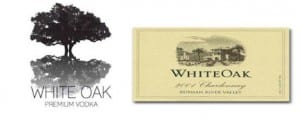
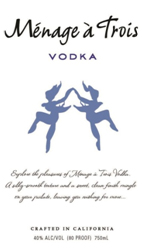
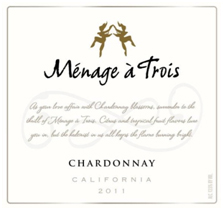
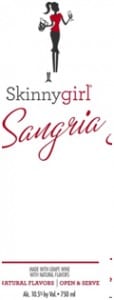
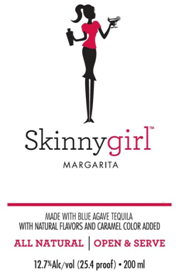
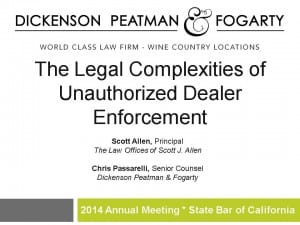
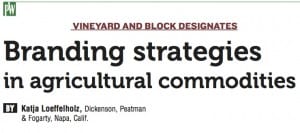
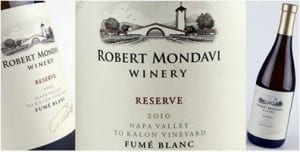
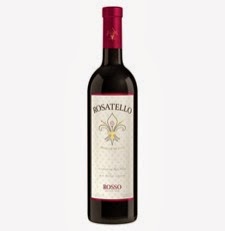
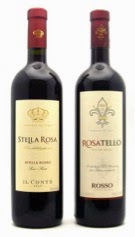
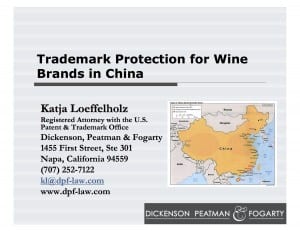
.jpg)